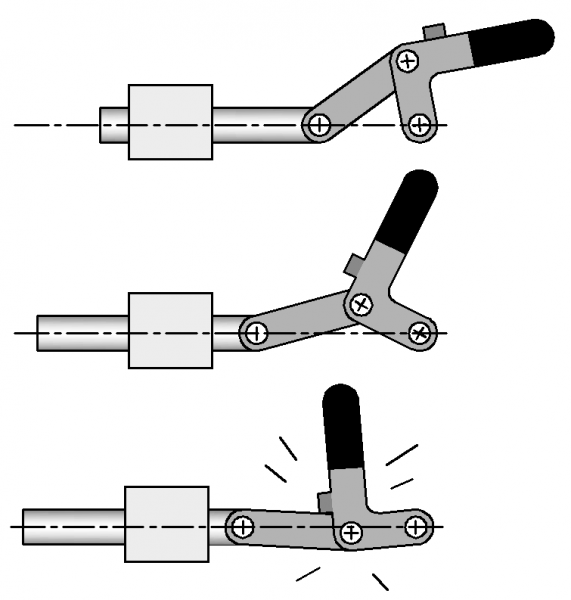An over-center linkage is a type of mechanical linkage that is commonly used to provide locking or latching mechanisms in a variety of applications. An over-center linkage consists of a series of links or bars that are connected by pivoting joints, which can be actuated by a range of input methods such as levers, cams or springs.

The basic principle of an over-center linkage is that it uses a mechanical advantage to create a locking or latching mechanism by utilizing the point at which the linkage goes over-center. This means that the force required to actuate the linkage increases as it approaches the point of over-center, and then decreases as it passes this point, creating a self-locking mechanism.
One of the most common applications of over-center linkages is in the locking mechanisms of folding chairs, tables and other furniture. In these applications, a lever or other actuation mechanism is used to apply force to the linkage, which then goes over-center and locks into position, holding the furniture in place. This is a simple and effective way to provide a locking mechanism that is easy to operate and requires no external locking components.
Over-center linkages can also be found in a range of other applications, such as in the locking mechanisms of safety gates and barriers, the clamping mechanisms of welding fixtures and jigs, and in many other industrial and commercial applications.
Designing an over-center linkage requires careful consideration of factors such as the required force and travel distance, the size and shape of the links and pivoting joints, and the required actuation mechanism. Additionally, the over-center angle must be carefully selected to ensure that the linkage functions correctly and provides the required locking force.
Overall, over-center linkages are a versatile and effective mechanism for providing locking and latching functions in a range of applications, and are widely used in industry, manufacturing, and everyday life.
